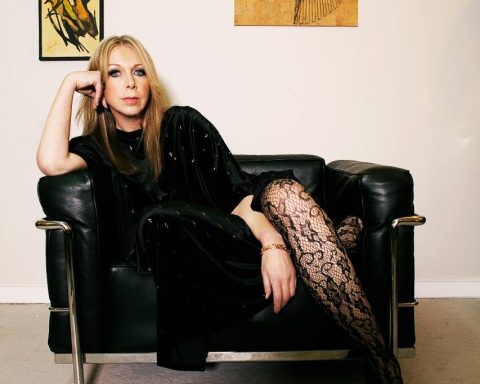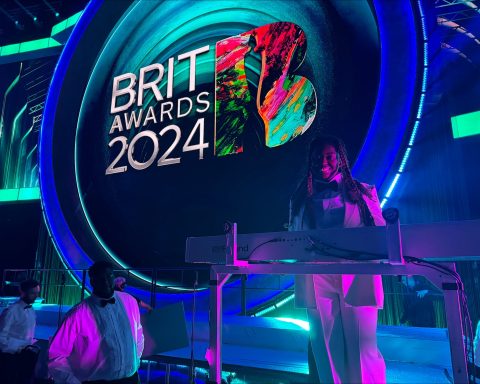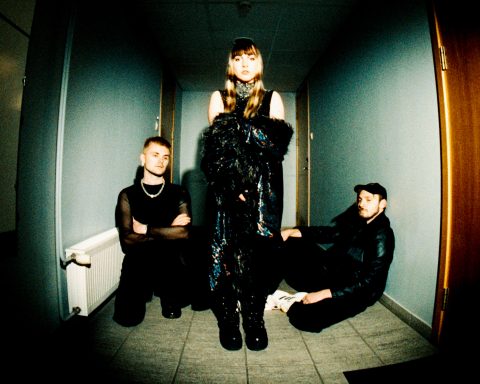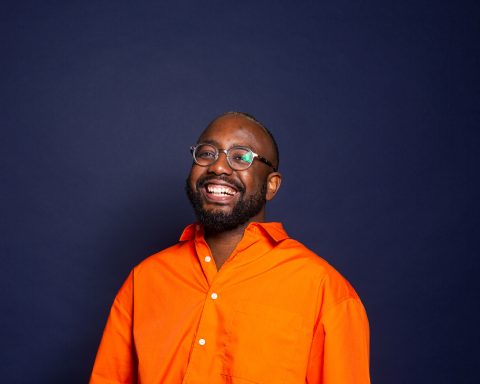Based in London, Yuri Suzuki is a Japanese artist, designer, and musician. His experience as a creator spans a diverse range of projects and collaborators. He’s worked at companies from Teenage Engineering to Disney, and developed instruments for everyone from Jeff Mills to will.i.am. We spoke to Suzuki about bringing 808303.studio to life, his love for acid house and techno through Roland gear, and musical life during quarantine.
Ototo and Furniture Music
While living in his hometown of Tokyo, Suzuki worked with the acclaimed art unit Maywa Denki, creators of the Otamatone. Some years later, he created Ototo. The circuit board converts the charge of conductive material (say a bicycle or an eggplant) into musical sound.
One of Suzuki’s many notable art exhibitions, Furniture Music, is based on the ideas of French composer Eric Satie. It investigates the concept that “sound that should not be actively listened to, but present at the periphery of our daily lives.”
The various “sound objects” Suzuki and his team created include a water kettle and blender. These items generate musically-related pitches from their steam exhaust and blade rotation, respectively. In addition, the team built a table that functions like the body of an acoustic guitar. The table playfully affects small gatherings of friends, amplifying their conversations and incidental sounds, like the quiet clatter of glasses and plates.

Roland + Pentagram + the Design Museum in London
Suzuki is currently a partner at Pentagram, the storied design firm founded nearly 50 years ago in London. The studio earned legendary status primarily for its branding and graphic design work. Pentagram straddles a unique space in the design world, with clients ranging from Citibank to the MIDI Association, along with artists like Alexander McQueen and Matthew Barney.
For their collaboration with Roland and the Design Museum in London, Suzuki and Pentagram created 808303.studio. The name pretty much says it all; 808303.studio is a web-based music tool. It combines interactive recreations of Roland’s TR-808 Rhythm Composer and TR-303 bass synthesizer. The tool distills each down to its most essential functions and syncs them together for quick, immediate play. The prolific artist explains that project and much more in this exclusive interview.
Creating 808303.studio
What was the original design brief for the 808303.studio project, and did it remain a fairly stable target through development?
The starting point for this project was actually pretty related to the COVID situation. The Design Museum is currently holding an exhibition all about electronic music, going back to artists like Kraftwerk. However, just before opening, lockdown began, which meant not many people had access to the exhibition.
Currently, museums can’t do any sort of visitor experiences like education and workshops. So, we thought it would be interesting to bring the sort of programming electronic music that Roland invented. The idea was to do it in a quite graphical way for people of any generation, through a simple web interface.
"It’s all about finding the coincidences. Once you get to know that, you can create something above your imagination."
Making the Interfaces Accessible
You chose to pare down both of the machines’ virtual controls for the web interface. How did you decide on the parameters that would be available, and was there anything that surprised you in this process of paring down?
I’m dyslexic, and it’s always been difficult for me to understand systems. There is, of course, so much you could do with really complicated parameter modulation, but it’s not about that.
For example, with the 303, we didn’t put in the major functions of slide and accent, because they’re quite complicated to program. We automated that and also used randomization with machine learning for different things behind the scenes. We’re using Google Magenta because it’s sort of a pre-programmed AI that’s suited for music-making, fed with music data from all over the world.
There’s a funny touch to the devices, in that when you click their play buttons, you hear the recorded physical sound of the button press.
This is really about my obsession with Roland gear [laughs]. Even the record function metronome countdown is from a real 303. It’s kind of an unnecessary thing we put in, but it’s something I love.
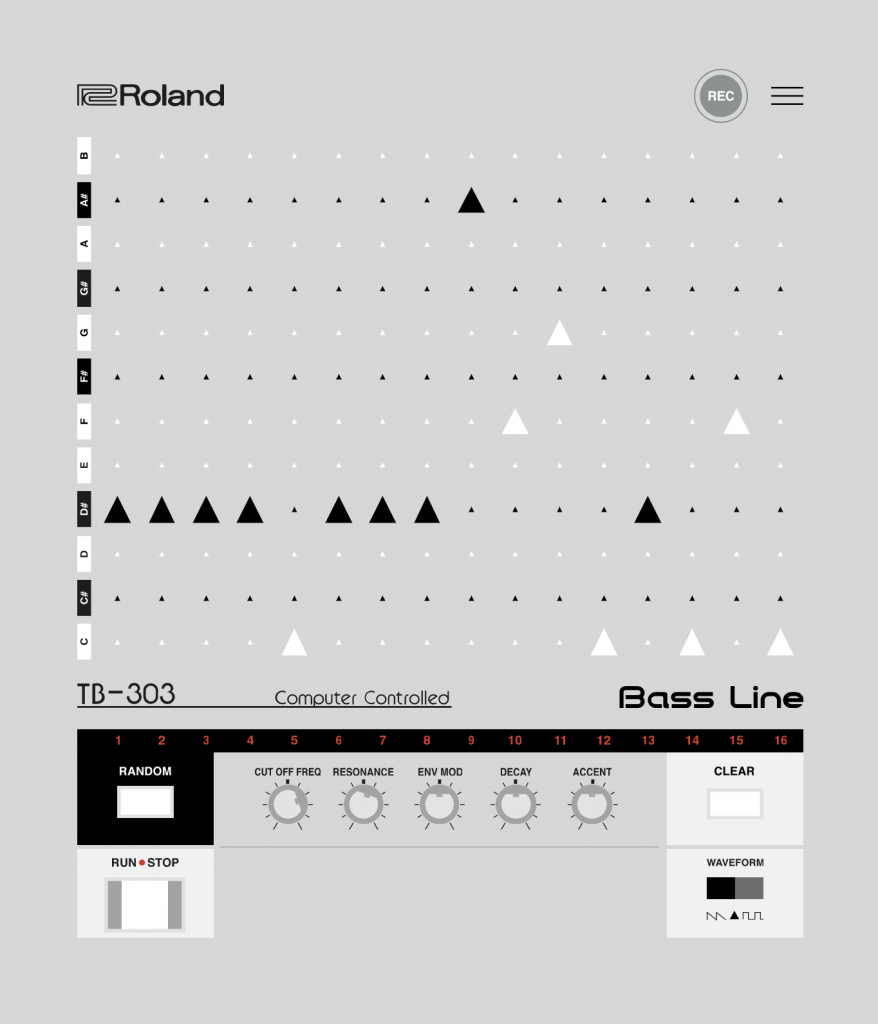
Inspiration and Discovery
What have you been most excited about lately, in terms of music technology? Have there been any surprising discoveries found during this strange period of forced remote work?
Definitely since lockdown started, I’m excited about acoustic stuff. I think people got more conscious about their acoustic environment. While I’m quite skeptical about new technology—I don’t like jumping to any hot new technology, like VR for instance—after working on a project for a particular client, I became quite interested in music AI.
"We thought it would be interesting to bring the electronic music programming Roland invented in a graphical way for any generation."
For instance, we do “sound branding” for different companies. This can be as short as one second but can also stretch to one hour, for something like telephone hold music. Of course, hold music can be very annoying when you hear it repeating a lot. So, we used AI to create related variations on a short phrase of music, where there’s no repetition for one or two hours.
Yes, I can see so much potential for AI in music. But I don’t think it can make beautiful pop music instead of humans in the future. I feel that kind of argument is kind of nonsense.

Making Music
You mentioned that you’ve also been able to spend more time making music during quarantine. What’s your current setup like?
I’m absolutely a Roland museum [laughs]. I have an original JUNO-6, SH-101, MC-202, 808, 909, 707, 303, and others—everything is classic Roland gear. I like the limitations, and I think it’s a quite unique way of programming music. It’s not about playing the keyboard. You have to kind of time triggers, like manipulating an arpeggio timing to make new phrases.
Everything is very mechanical and it’s sort of a strange way of composing. It’s all about finding the coincidences. Once you get to know that, you can create something above your imagination. And yes I’ve managed to make so much music since lockdown started— almost one song per day for 100 days. Very primitive, acid house and early house music style.
"Denki Groove were always holding a 909 or 303 in photographs. The shape and the design of the machines intrigued me."
A Lifetime with Roland
Do you remember the first time you felt the influence or allure of Roland gear or other music tools?
I’m really into electronic music because of artists like Yellow Magic Orchestra and Kraftwerk. I remember the first time I ever saw Roland gear was from my dad, who had a leaflet about the first Kraftwerk concert in Japan, around 1980. There was a one-page Roland advertisement in there, I think for the System 100-M and MC-4. From Kraftwerk, I wondered how I could produce this type of music, and the answer was kinda right there.

I eventually became more into design, and more into techno music, such as Denki Groove from Japan. They used Roland gear heavily and were always holding a 909 or 303 in their artist photographs. It was the shape and the design of the machines that intrigued me.
I used to buy a geeky Japanese magazine called Sound and Recording, with photos of studios of famous Japanese musicians. I’d dream about owning some of the instruments, but I didn’t really own my 808 or 909 until I earned money myself [laughs].

I always liked the idea of collecting the things I wanted as a child, so I kind of decided to buy one piece of dream gear each year. I have a nice collection now. Actually, I’m always trying to find ways to pare down my setup.
Check out Yuri Suzuki’s latest release, Thanet House.



